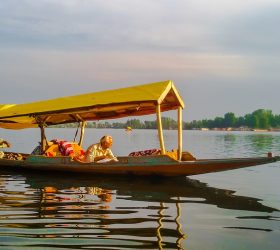Srinagar
Srinagar was the capital of the Garhwal until 1985 when it was ceded to the English as a renouncement for having driven back the invaders Gurkha in Nepal. On the day of Vaikunth Chaturdashi (November), childless couples watch over the night at the ancient temple of Kamleshwar raising prayers to have children. But Srinagar is famous for houseboats, accommodations built with cedar wood and measure from 24 to 38 meters in length and from 3 to 6 meters in length.
Kargil
The administrative capital of the valleys of Suru, Drass (the second coldest place in the world after Siberia), Wakha and Bodh Kharbu, Kargil is located halfway between the alpine valleys of Kashmir and the fertile plains of the Indus and Lakakh Valley. Bathed by the rushing waters of the Suru River, despite being the second largest city of Ladakh, it consists of a long main street, Main Bazaar Rd, from which a multitude of narrow streets branch off.
Leh
Heart and soul of Ladakh, will be our base camp and gateway to the natural and cultural beauties of the region. During our stay you will have the opportunity to visit the local monuments, such as the dilapidated Leh Palace, former home of the royal family; the Victory Fort, perched on the Namgyal hill and reachable on foot for those who have enough breath; the recent Soma Gompa, which has become the Buddhist center of the place; the city mosque; the immaculate Shanti Stupa ; or simply get lost in the maze of narrow streets and houses of the old center. But in this small town you can also breathe an alpine climate, being in fact the center for trekking and ascents to the nearby mountains.
Monasteries of the Valley of the India
Built in an elevated and spectacular position that dominates the villages, they are the true symbol of Ladakh and its spirituality. Along the Indus valley we will see and visit various things, including the monastery of Tikse, Shey and Hemis in the eastern part of the valley, the monasteries of Alchi, Liker and Lamayuru, the oldest monastery in the region, in the western part. We will also visit the typical palaces, such as the Stok Palace, used as a museum and home of the last king of Ladakh, and the Bagso Palace in the homonymous ancient village capital of the lower Ladakh kingdom. To get an insight into Buddhism see here list of popular 10 Buddhist monasteries in India.
Nubra valley
Separated from Leh by Khardung La, the highest road pass in the world (5600 m asl), is a lush and fertile valley (Nubra means green) once situated on the trade route between Tibet and Turkestan. The valley is a very large flood plain crossed by the rivers Shoy and Nubra, rich in thick forests where many animals hide, including the two humpbacked camels now no longer wild, high sand dunes, hot springs and the inevitable monasteries.
Tso Moriri and TSO kar
On the way back to Delhi you will make a detour by following the Indus for a while, until you fall back to Rupsu Valley, to go to Tso Moriri (4400 m asl), known as the mountain lake. This place is ideal for relaxing, visiting the nearby Gompas or taking nice walks around. Not far away there is another interesting lake, the TSO Kar, better known as the white lake.
